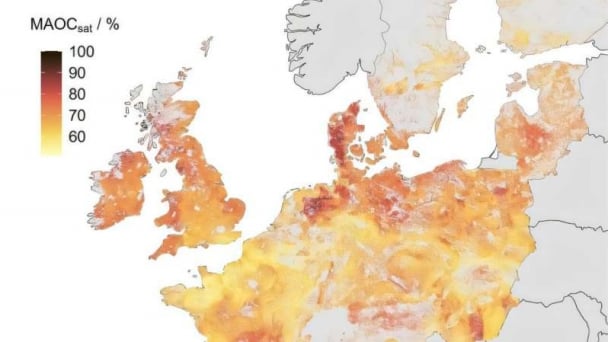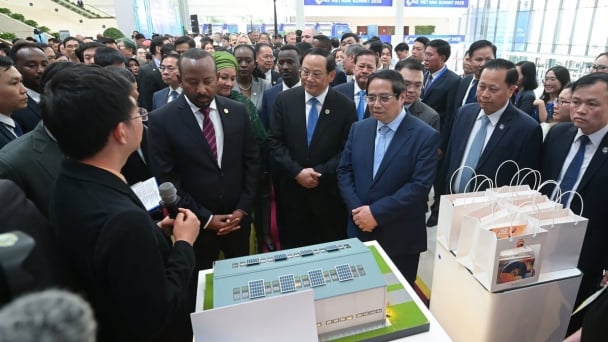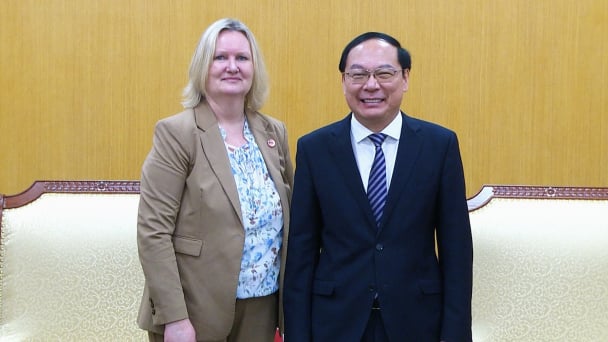April 17, 2025 | 10:43 GMT +7
April 17, 2025 | 10:43 GMT +7
Hotline: 0913.378.918
April 17, 2025 | 10:43 GMT +7
Hotline: 0913.378.918
Speaking at the international workshop on the conservation and development of craft villages, Dr. Nguyen Thi Thu Trang, an expert from the Department of Cultural Heritage, Ministry of Culture, Sports, and Tourism, pointed out that, based on the cultural criteria in constructing New Rural Areas (NRA), the protection and promotion of the values of living heritage also need to be considered when recognizing localities that meet NRA standards.
The national target program for building New Rural Areas (NRA) was developed based on Resolution No. 26-NQ/TW, dated August 5, 2008, on agriculture, farmers, and rural areas. It includes criteria for the development of traditional crafts, the preservation and promotion of traditional cultural and folk sports activities of the locality, and the protection and preservation of historical, cultural, and scenic sites.

Khen art of the Mong people in Bac Ha district, Lao Cai province. Photo: Duong Toan.
Referring to research from the UNESCO Representative Office, Dr. Nguyen Thi Thu Trang gave an example of good practices in living heritage at exemplary NRA communes, such as the Mong ethnic group's khen (a traditional musical instrument) art in Bac Ha district, Lao Cai province. The living heritage of Mong people's khen art is preserved and passed down in the community through the crafting technique, artistic usage, performance environment, and related cultural customs and traditions (in life cycle rituals, family and community cultural events). The community actively engages in tourism activities, using the heritage to contribute to the local economic and socio-cultural development, promoting the heritage. Performances of the "bai choi" singing, agricultural knowledge in Tra Que vegetable village, Kim Bong carpentry, Thanh Ha pottery, Mid-Autumn Festival, "Thien Cau" dance, etc., are being used and exploited by the community as a resource and livelihood. This not only serves the local economic development and community development but also strengthens the solid foundation of Hoi An's urban identity in Quang Nam province.
Based on this, Dr. Nguyen Thi Thu Trang proposes policy recommendations for the preservation of cultural values in craft villages and the construction of new rural areas, emphasizing community-based management of living heritage. Accordingly, it is essential to respect the community's interpretation, transmission, presentation, or reproduction of its past; establish fairness and equality in decision-making processes involving multiple stakeholders; and enable reliable decisions from respected members within/for the community.
In addition, management needs to operate on a mechanism of empowering and interacting with the community as subjects to control, protect, and share the people's perceptions of heritage and promote it in their own way, based on respecting heritage laws. This interaction with the community is to jointly implement heritage and NRA policies.
Accordingly, the Department of Cultural Heritage proposes three central models: the Eco-Museum Territory - Heritage - Memory - Community; the model of Connecting Heritage Tourism Journeys; and the model of Green Agriculture - Living Heritage. According to Dr. Trang, these models will lay the foundation for a "comprehensive museum," encompassing the overall life of the community; protecting natural and cultural heritage in the territory and community. The unique cultural features continue to "live" in the local cultural environment, benefiting the community, and improving the local economic and social conditions. At the macro level, the image of the country and the Vietnamese people is honored, and Vietnam's natural and cultural heritage is preserved, promoted, and expanded in integration.
Sharing at the workshop, Minister Le Minh Hoan wondered on how people in the villages and in the craft could step beyond their limits and connect with the world, having a vision beyond the village's bamboo range limit, breaking the pre-determined molds.

Minister Le Minh Hoan shared about craft village development at the conference. Photo: Ba Thang.
At the International Workshop on the Conservation and Development of Craft Villages, Minister of Agriculture and Rural Development Le Minh Hoan stated that Vietnam has immense creative space for the development of craft villages, as this is just the initial stage for integrating craft villages into new spaces.
According to the Minister, the potential will expand further if craft villages integrate additional values from local culture, history, tradition, environment, landscape, etc. The integration of technology is also a mandatory trend to update products that can "tell their own stories," such as pottery products integrated with AI, and QR codes to provide convenient and interesting information for the audience.
The Minister believes that, with concerted efforts, systematic thinking, systematic action, and support from international organizations and foreign experts, the expectations of traditional artisans and craftsmen regarding the preservation and development of craft village values will be realized in the near future.
Translated by Linh Linh

(VAN) The study concludes that the majority of EU agricultural soils require additional protective measures, such as cover cropping, improved crop rotations, reduced tillage, deep rooting crops, increasing organic amendments and agroforestry.

(VAN) Prime Minister Pham Minh Chinh chaired the official welcoming ceremony for high-level delegations attending the P4G Summit 2025 and visiting green startup business booths.

(VAN) On April 16, Vietnam Deputy Minister of Agriculture and Environment Le Cong Thanh welcomed and worked with State Secretary for Trade & Global Sustainability at the Danish Ministry of Foreign Affairs Lina Gandlose Hansen.

(VAN) Japan and Vietnam will strengthen their capacities in early disaster warning, resource circulation, and the effective, sustainable management of electronic waste.

(VAN) This was affirmed by the Director-General of the Global Green Growth Institute (GGGI) during a working session with Deputy Minister of Agriculture and Environment Le Cong Thanh.

(VAN) On April 16, Minister of Agriculture and Environment of Vietnam Do Duc Duy received Minister of National Planning and Development of Indonesia Rachmat Pambudy.

(VAN) China’s Ministry of Ecology and Environment shares its journey of transitioning energy and monitoring air pollution to keep Beijing’s skies blue.